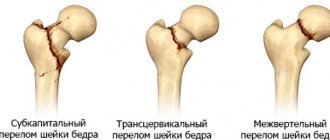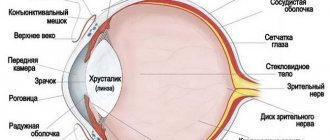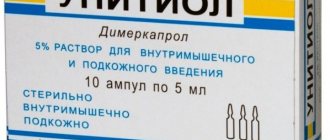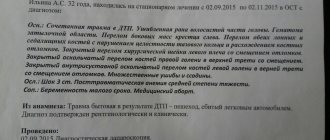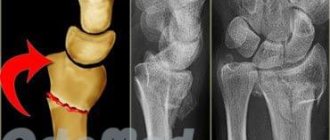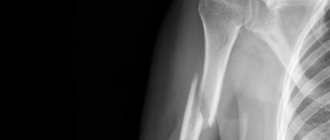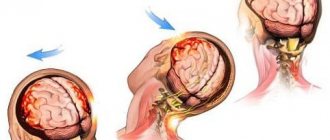A clavicle fracture is a phenomenon common in all age categories of people. In newborns, such injury is caused by rapid labor or incorrect actions of obstetricians. In adolescents and adults, it can be caused by a fall on the shoulder or a strong blow to the collarbone.
If it so happens that the patient has a fractured collarbone, then he urgently needs first aid and referral to a traumatologist. The main method of treatment is to restore the integrity of bone fragments. The patient may undergo plaster immobilization for a clavicle fracture or a tight bandage. The choice of treatment depends on the complexity of the fracture, so it is important to classify it correctly.
How to determine a clavicle fracture?
The clinical manifestations of a clavicle fracture can be determined visually if there is a noticeable deviation from the natural state of the bone. The main symptom that worries the patient is pain in the shoulder area. Any movement causes severe pain in a person. In addition, the patient experiences severe swelling or swelling in the forearm area, which clearly indicates a problem.
If such signs appear, then you urgently need to contact a traumatologist; he will be able to accurately diagnose and carry out all the necessary immobilization measures for a clavicle fracture or bruise.
Diagnostics
It is quite easy to detect a fracture of the collarbone: there is a sharp pain in the area of the fracture, often fragments of the collarbone stretch the skin in the form of a tent, less often they break through it. When you try to raise your hand, a crunch may occur.
In most cases, the unevenness or deformity is obvious, and the diagnosis is beyond doubt, but an x-ray examination is necessary, which will provide accurate information about the nature of the injury, after which the most optimal treatment option is selected.
Classification
Depending on the area in which the fracture occurred, clavicle fractures are divided into several types:
- injury to the inner third of the bone or sternal end;
- injury to the middle third or diaphyseal fracture;
- fracture of the acromial end or injury to the outer third.
- transverse, when the bone breaks transversely, dividing into two blunt limbs;
- longitudinal, when the fracture runs along the bone;
- oblique - the fracture occurs at an angle, and as a result the bone is divided into two parts with sharp ends;
- spiral fault;
- comminuted, when the bone is broken into several pieces.
The second type is considered the most typical.
Depending on the nature of the fracture, there are the following types of clavicle fracture:
Also, fractures are closed when the skin is not damaged. Or open - with violations of the integrity of the skin.
There are many types of clavicle fractures, but 80 percent of patients experience the diaphyseal type, which is located in the middle third of the long bone. What immobilization is performed for a clavicle fracture?
Causes and forms of fracture
The most common cause of a fracture is trauma. Traumatic causes of a fracture can be the following: a fall from a great height onto the arm, elbow, outer side of the shoulder, birth trauma, muscle cramps.
A fracture can occur due to strong mechanical impact or pressure on the collarbone. The bone most often breaks during outdoor games or sports activities, as a result of accidents.
A fracture can also occur if the bone structure is damaged. In this case, even a small impact is enough to break it. Such a fracture is called pathological. This can lead to:
- Tuberculosis of the clavicle. A fairly rare phenomenon in which pathogenic bacteria infect the bone and gradually destroy it from the inside.
- Cancer tumor. Most often it is osteosarcoma - an aggressive tumor originating from bone tissue. The disease provokes the proliferation of altered cells and the destruction of healthy ones.
- Osteomyelitis of bone. Infection of tissues by pathogenic microbes. It can be provoked by the presence of chronic diseases, immunodeficiency or surgery.
MORE ABOUT: Fractures of the bones of the foot - Traumatology and orthopedics, Trauma and treatment of the foot
In case of a clavicle fracture caused by pathologies, the usual symptoms of bone damage are preceded by signs of general intoxication of the body and damage to its internal systems.
Complications can occur with both types of injury: a small additional impact on the damaged bone is enough for its fragments to move.
First aid for a broken collarbone
A clavicle fracture is a serious problem that cannot be dealt with at home. But competently provided first aid will reduce the likelihood of complications and shorten the recovery period.
If the first signs of a collarbone fracture appear, it is better to keep your hand pressed to your body. If the patient feels pain in this position, then it is better to leave it in the position in which the discomfort is minimal.
The patient must be given an anesthetic. This may be a non-steroidal anti-inflammatory drug, such as Analgin, Ketanov, Ibufen and others.
Also, in case of a clavicle fracture, immobilization is performed, which is the key to a speedy recovery.
Primary immobilization is called temporary and is done in order to reduce pain and avoid serious complications. There are many ways, but it is important to know: the longer the bandage is on the patient, the weaker its supporting function becomes. That is why during long-term transportation you should rewind the bandage from time to time to improve the degree of fixation.
First aid
As with fractures of other bones, if the integrity of the clavicle is violated, first-aid is aimed at prompt immobilization of the limb, which is performed to prevent possible movement of bone fragments and additional injuries, and elimination of the pain syndrome causing suffering to the victim.
First aid consists of doing the following:
- Allow the victim to take painkillers (Analgin, Ketorol, Baralgin, Ibufen, Paracetamol, etc.) or perform an intramuscular injection of an analgesic.
- Call an ambulance.
- If there are open wounds, treat them with an antiseptic, apply a sterile bandage and secure it with an adhesive plaster.
- Place a small roller in the armpit.
- Bend the arm at the elbow joint and immobilize the limb using a scarf bandage. If there is no material for such a bandage, then you can use a shirt, T-shirt or T-shirt rolled up. When immobilizing an arm, it is necessary that the entire part of it from the wrist to the elbow is secured with a bandage. If this condition is not met, the limb will be insufficiently immobilized and bone fragments may become displaced.
- Apply cold over the bandage to the injured area.
Simple and effective dressings
There are several methods of immobilization for a clavicle fracture:
- Delbe rings. You can make such a retainer using improvised means, such as a towel or shirt. Two rings need to be formed around the forearms. They should fit snugly against the skin, but not squeeze. In the back area, a bandage is passed through the rings, which will help to properly tighten the bandage until the patient himself says that the pain syndrome has decreased to a minimum. This method will allow you to separate the debris and relieve pain. But this method also has its drawback - it does not allow you to raise your forearms.
- Figure 8 shaped headband. This method, like the first, helps to separate the shoulder girdles, but it also requires additional support bandage. You need to start knitting it by applying three rounds for fixation, which are located at chest level. While the gauze is passing through the back, soft pillows are placed in the armpits at the level of the shoulder blades. After they are fixed, you can proceed to the bandage itself. When the bandage comes out to the front of the body, it should not cross the chest, but go to the armpit area, again going to the back. As a result, it turns out that the patient was wearing a vest. The bandage should be done tightly to spread the shoulders as much as possible so that the patient is comfortable.
- Headband. This method is the simplest and most accessible, but only it will not allow immobilization in case of a clavicle fracture in an extended form and will not allow reliable fixation. This type of brace helps elevate the arm and prevent it from sagging. In this case, the muscles in the collarbone area do not tighten and do not provoke separation of bone fragments.
- Deso bandage. It can be done with a simple or elastic bandage. In the chest area it is necessary to fix a couple of pillows, wrapping them with a bandage, and then from the armpit of the healthy arm the bandage goes to the patient’s shoulder and is thrown over it, and then passes down the back to the elbow, goes around it and follows to the armpit of the healthy arm. He moves to his back obliquely and again goes around the sore forearm, but only from behind and forward. Then the bandage goes again to the elbow, but from the front side of the body, again goes under the elbow and to the armpit of the healthy arm. At the end, you need to make another turn around the body and the pressed shoulder and return to the starting point. If you repeat this sequence again, you can perform even better immobilization of the upper limbs in case of a clavicle fracture. You can purchase such a bandage ready-made.
- Velpeau bandage. You need to arm yourself with a bandage, place your sore hand on your healthy shoulder at an angle of 45 degrees. You should start applying the bandage from the middle of the shoulder of the sore arm. Along the front side of the body, the bandage passes to the opposite side and extends onto the back. Do this a couple of times, then from the back, throw the bandage onto the front side over the shoulder of the sore arm, over the elbow, then onto the side of the healthy arm. Next it passes along the back and again on the forearm of the injured limb. In this way, it is possible to securely fix the loop on the shoulder and prevent it from moving. Carry out two or three such cycles, and effective immobilization for a clavicle fracture is carried out.
All these methods of fixation will not only relieve pain, but also prevent the fracture from moving and damaging nearby tissues.
Clavicle fracture. Causes, symptoms, types, first aid and rehabilitation
- by type of location: fracture of the outer, middle, inner third of the clavicle;
- in the direction of the fracture: transverse, oblique, S-shaped, T-shaped, comminuted, screw.
- by the presence of skin rupture with sharp fragments: open and closed fracture;
- by the presence of displacements: with displacement of fragments, without displacement.
All shoulder orthoses can be divided into several large groups, each of which performs its own functions and is prescribed in certain situations.
Fixing bandage
An immobilizing semi-rigid orthosis for the shoulder and forearm reliably secures the problem joint after injury (fracture, dislocation, etc.) or surgery. In such a bandage, the patient cannot move his shoulder or move his arm to the side.
A fixing orthosis-kerchief made of elastic fabrics is sometimes supplemented with rigid structures - splints, hinges, which help set the desired angle of the arm and shoulder joint.
On a note! In addition, an abduction shoulder orthosis is produced, which has a special pillow. It is placed between the body and the arm, maintaining a given angle of the shoulder joint.
A soft support bandage is used primarily for injury prevention by athletes. It only provides the necessary level of compression on the joint and muscles, excluding sprains and fractures.
The most popular modification of such an orthosis is the Deso bandage, which helps secure the arm bent at the elbow using one or two shoulder straps, as well as a wide elastic fastener that is attached to the body.
This type of bandage is often a short-sleeved vest that is worn over the problem shoulder. The abductor shoulder orthosis has a fixing strap that regulates the range of motion of the arm.
Clavicle bandages
Bandages for the shoulder and collarbone are called “Delbe rings”. With their help, the shoulder girdle is fixed during treatment for injuries of the sternoclavicular joint.
The prescription of shoulder orthoses can serve several purposes. In this regard, several large groups of different designs have been developed, united by one name - “shoulder bandage”. The groups are called:
- fixing bandages;
- support bandages;
- restrictive bandages;
- clavicular bandages.
Each group performs a specific set of functions and is assigned in the appropriate situation.
Immobilization (immobilization) for various fractures of skeletal bones is a mandatory procedure that contributes to the successful course of the recovery process and the elimination of complications in the patient. In case of improper fixation of the clavicle during an injury, the fragments formed during the fracture may damage the blood vessels and nerve trunks.
Bandages vary in the material they are made from and how they are applied. Before applying therapeutic dressings, anesthesia must be performed.
Delbe bandage
A Delbe bandage is used as a conservative treatment method. To make it you will need cotton wool and gauze. A layer of cotton wool is rolled into a long, tight roll and wrapped in several layers of gauze or bandage.
The rolls are placed into the person’s armpits and rolled into rings. They are fastened together on the back (photo). The bandage prevents displacement of the damaged edges of the clavicula.
Modern modification of Delbe rings
It is better to apply this bandage with an elastic bandage. It is also used for medicinal purposes. It is applied crosswise through both armpits and shoulder girdles. It is often used as a therapeutic bandage for children.
Diet headband
Mainly used for transport immobilization. This dressing involves the use of adhesive tape. Using a wide plaster, the forearm is fixed in a bent position at a right angle.
Kosynochnaya
A scarf bandage is the simplest option for transport immobilization. It can be made from any durable fabric you have on hand. The manufacturing instructions are very simple. A triangle is made from a piece of fabric.
The simplest dressing option
Oval Titova
Another type of bandage for transport immobilization. The oval is placed in the armpit on the side of the injury. The hand is suspended on a scarf or wide bandage.
Crutch bandage
A crutch bandage is made from crutches. It ensures maximum separation of the shoulder girdles and maintaining them in this position. A splint is made from the crutches, the length of which corresponds to the distance from the patient’s armpit to the wing of his ilium.
The application of a crutch bandage should be carried out in several stages.
- First, the patient raises his hand up, trying to reach the back of the head with his palm. In this position, maximum extension of the shoulder girdle occurs.
- Then the splint is placed so that one edge rests against the armpit, and the other against the wing of the ilium. The lower end of the splint is fixed with plaster bandages across the body.
- At the last stage, the patient lowers his arm over the upper edge of the splint. At the same time, the collarbone gets into the correct position and the fragments are compared. The lower edge of the splint is fixed diagonally across the entire body to the shoulder girdle of the opposite side.
The period of wearing such a bandage is one month.
The correct bandage ensures the immobility of bone fragments and healing of the damage. Everyone should know how to apply a bandage for temporary immobilization.
Deso and Velpeau bandages, plaster casts are not used today, since wearing them causes muscle atrophy and damage to the shoulder joint.
A bandage for a clavicle fracture is a mandatory element in the treatment of injury. Its use can significantly reduce the healing time of a fracture.
Treatment of a clavicle fracture
The choice of treatment for a clavicle fracture depends on the patient's age, but in no case should therapy be carried out at home. In newborns and children under three years of age, treatment of clavicle injury is easy and quick with minimal intervention from a traumatologist.
For those children who are over three years old, the bones will fuse for at least six months. That is why it is recommended to apply a plaster cast, but the victim is first given painkillers.
A much more complex case is possible, when surgery cannot be avoided. Its essence is to apply a special metal structure, which will allow for reliable transport immobilization in case of a displaced clavicle fracture. With its help, you can completely eliminate the displacement of fragments.
Osteosynthesis is carried out with screws or plates. The doctor decides what to use in a particular case, based on the nature of the fracture, because it can be closed or open.
In some cases, immobilization is performed with a Kramer splint for a clavicle fracture. It is an aluminum ladder that bends perfectly, so it perfectly follows the contours of the body and helps to more reliably fix a fracture not only of the forearm, but also of other bones of the body.
Rehabilitation after a clavicle fracture: exercise therapy exercises
Everyone who has suffered such an injury wants to know how to develop a hand after a clavicle fracture with or without displacement.
This injury is not uncommon and can occur from a fall, a blow to the shoulder, during sports or recreation, at work or at home.
Rehabilitation after a clavicle fracture is a very important stage of recovery, since with a fracture accompanied by displacement of fragments, it becomes impossible to even perform such a simple action as raising an arm.
If the collarbone is broken, the treatment period lasts approximately five weeks, and the treatment program depends on how serious the injury is, whether there are any complications, what the patient's age is and how he adheres to the doctor's treatment recommendations. Recovery from clavicle fractures, as a rule, does not take longer than three weeks if the patient approaches rehabilitation comprehensively.
Clinical picture
When a person receives a fracture of the clavicle bone, a sharp pain syndrome occurs, the site of the injury swells, and a hematoma occurs. The shoulder becomes noticeably deformed and falls down, leaning forward.
When moving or palpating the injury site, crepitus occurs, which indicates displacement of the fragments.
If a neurovascular bundle is pinched at the time of injury, the fingers begin to go numb, and the degree of sensitivity of the skin depends on the degree of pinching.
Treatment and possible consequences
Immediately after receiving an injury, it is necessary to call an ambulance and provide the victim with first aid. To relieve pain, ice is applied to the injured area, and the arm itself is fixed in a stationary state using a scarf. If the pain is very severe, then you can give the victim a couple of analgesic tablets.
You cannot try to set the fragments or return the limb to its anatomical position on your own.
When the clavicle bone breaks, conservative therapy or surgical treatment may be prescribed. The doctor decides how to treat the injury, based on a preliminary examination of the patient.
The clavicle area is not surrounded by a thick layer of muscle tissue, so at the time of injury, the muscles do not pull the fragments and do not lead to a large displacement. However, sometimes doctors resort to surgery, the indications for which are:
- Slow bone healing;
- Secondary displacement of fragments after a certain period of time;
- Improper fusion of bone fragments.
A plaster cast is almost never applied to the collarbone; instead, the doctor immobilizes the injury site with a complex bandage.
Despite the fact that the arm in the collarbone area cannot move, it is worth developing the limb in those places that have retained mobility.
In very rare cases, a plaster cast with a cotton swab may be applied to the armpit. After immobilization, the following consequences arise that require elimination through rehabilitation:
- painful sensations;
- swelling of tissues;
- impairment of motor activity;
- congestion;
- impaired blood circulation and fluid outflow;
- muscle tissue atrophy.
To eliminate the consequences after prolonged immobilization, you should adhere to the rehabilitation plan developed by the doctor after a fracture of the clavicle with or without displacement.
Rehabilitation period
When a non-displaced clavicle fracture occurs, the recovery period begins even before the bandage is removed. This is necessary so that the bone heals faster and blood and fluid do not stagnate in the tissues. To restore the functionality of an injured arm, the attending physician must draw up a rehabilitation plan that will allow the injury site to heal faster.
To ensure the patient gets physical activity as quickly as possible, during the rehabilitation period the doctor prescribes:
- Physiotherapy;
- Massage;
- Physiotherapy;
- Special diet.
Recovery should be under the supervision of the attending physician and include all these points.
Physiotherapeutic procedures
In order for physical therapy to have a positive effect, it should begin a week after the patient is injured. To restore the functionality of the limb, the following procedures are used:
- electrophoresis;
- magnetic therapy;
- phonophoresis;
- UHF;
- UV therapy;
- paraffin applications;
- hydrotherapy;
- mud therapy.
These and other procedures increase blood and fluid circulation, allowing bone fragments to heal faster and the patient to return to physical activity more quickly.
Massage
If the fracture is not very complex, then massage is one of the first points of recovery and begins on the tenth day from the start of treatment.
During the procedure, the massage therapist acts on healthy tissue located close to the fault line, which has a positive effect on the entire limb.
While the collarbone is under the bandage, the specialist massages the shoulder blade and shoulder. This should be done very carefully, with stroking movements.
You can increase the intensity only after removing the plaster or bandage, and then this must be done gradually.
Massaging the fracture area helps restore sensitivity of the skin, speed up blood flow, and warm up muscle tissue. To carry out the procedure, it is better to use special massage creams and oils.
The massage should be done by a professional, as it is important not only to press on the right points, but also to do it with the right force.
Physiotherapy
Exercise therapy after a clavicle fracture should begin before the plaster cast or complex bandage is removed. To begin with, the exercises are done with the fingers and hand of the injured limb, without the need to raise your arm and develop the elbow joint.
Physical education in the first days should not be carried out for longer than a few minutes at a time, but all exercises should be repeated up to six times a day. Movements should be smooth and slow, without jerking and large amplitude.
If the patient experiences pain or discomfort during exercise therapy for a clavicle fracture, you should stop and continue a little later.
If the treatment was carried out surgically, then you can begin to develop the arm only after the sutures are removed, since early physical activity can lead to their divergence.
The exercises themselves for the shoulder girdle remain the same as for a simple fracture, which was treated conservatively.
To select exercises, the doctor evaluates not only how the bone has fused, but also the condition of the postoperative suture.
After removing the bandage for development, the following exercises are done:
- put your hands on your shoulders, alternately lift your elbow joints up;
- rotate your elbows in the same position;
- straighten your arms, raise and lower them in front of you, then to the sides;
- bend the upper limbs at the elbows and move them back;
- make waving movements with your arms in different directions.
When performed daily, these exercises will give good results and return active functionality to the limbs.
Nutrition after a fracture
Bones after fractures need additional calcium supplementation. In order for calcium to be well absorbed from food, a person needs vitamin D, as well as silicon, which will help the body synthesize its own calcium. To speed up recovery, the patient is recommended to eat:
- milk;
- cottage cheese;
- fish;
- jelly;
- aspic;
- raspberries;
- currants
During treatment and rehabilitation, it is strictly forbidden to consume alcoholic beverages and carbonated water; it is advisable to limit the consumption of coffee and strong black tea, as well as chocolate, spicy, smoked, and pickled.
If you follow all medical recommendations, then developing a hand after a collarbone fracture will not be difficult and will take very little time.
Source: https://vseotravmah.ru/perelomy/reabilitaciya/vosstanovlenie-posle-pereloma-klyuchicy.html
How to treat a displaced fracture?
What to do if the clavicle is broken with displacement? The first step is to properly immobilize. In case of a displaced clavicle fracture, the arm is completely immobilized and the main symptoms are determined.
After confirming the diagnosis, the traumatologist applies a bandage, which is securely fixed with plaster. But this can only be done when the doctor puts all the pieces in place, adjusting them by pulling the shoulder back. But only an experienced doctor should carry out this procedure; self-medication in this case can only cause harm. Only after this is a bandage applied.
If the bone is broken in several places and there are many pieces, then in this case, transport immobilization for a clavicle fracture involves the application of a special splint so that eventually all the bones heal correctly. This procedure should be carried out if the usual tight bandage did not help and the blood vessels and nerve endings were damaged. Proper therapy involves recovery for seven weeks, after which all symptoms will go away.
Treatment methods
Treatment for a displaced clavicle fracture can be either conservative or surgical. Non-comminuted subperiosteal fractures with slight displacement, as well as injuries without displacement, are subject to conservative treatment. Indications for surgical intervention are the presence of fragments, significant displacement, or an open type of fracture.
Surgery
Surgical treatment consists of matching bone fragments (reposition) and firmly fixing them in a given position (osteosynthesis). An intraosseous pin or an external plate may be used to secure the bone.
The Ilizarov apparatus, which is successfully used in the treatment of other types of fractures, is practically not used for injuries to the clavicle, due to its extremely inconvenient location for the patient, as well as due to the high risk of infectious complications.
An operation using pins makes it possible to achieve the most durable connection in case of a comminuted fracture of the clavicle with displacement. However, it is technically difficult and is accompanied by a high risk of complications.
A channel is laid in the tissues of the bones. A metal pin is inserted into it, passing through the fracture line and firmly fixed in the second fragment.
Surgery with a plate for a displaced clavicle fracture is less traumatic and technically simpler. When it is performed, a flat metal plate with holes is placed on top of the combined fragments on the fracture line and surrounding tissues, which is fixed with special bone screws.
This method is accompanied by the least number of complications, but does not allow creating as strong a bond as in the case of a pin.
Osteosynthesis
Osteosynthesis of fragments is carried out as soon as possible, before the start of natural healing processes and the formation of a false joint. The operation is performed under general anesthesia. The surgeon makes an incision, manually aligns and fastens the fragments, fixes them and installs drains. After this, the wound is sutured. The limb is immobilized using a soft bandage.
Discharge from the drains is monitored for 2 days. If the discharge from the wound is not purulent or bloody, the drains are removed, after which a permanent sternohumeral type plaster cast is applied. If pus drains through the drains, the wound is opened, cleaned and treated with antibiotic solutions, after which it is re-sutured and the antibacterial therapy prescribed to the patient is changed.
The patient is allowed to make limited movements of the limb after no less than 3-4 weeks. The installed pins and bone plates are removed after complete fusion of the bone. As a rule, this occurs six months after the operation. Full use of the hand and performing heavy physical work with it is acceptable after 8-12 months.
In addition, in the early postoperative period, problems that are characteristic of any type of surgical intervention may arise: infectious complications, bleeding, severe pain, suture failure, etc.
Drug support of treatment
In the postoperative period, the patient should receive drug treatment. Patients who have undergone surgical osteosynthesis are prescribed drugs that accelerate bone fusion (chondroitin, teraflex, products containing calcium salts).
Such medicines contain substances that are building materials for bone and cartilage tissue.
In the first week after surgery, patients are prescribed antibacterial therapy with drugs that can penetrate the bone (lincomycin, tetracycline, vibramycin), painkillers (ketorol, analgin), vitamin therapy, drugs that prevent the development of thrombosis (aspirin-cardio, cardiomagnyl).
The last group of drugs should be used only in the absence of data indicating a high risk of bleeding.
For conservative treatment of fractures, the drug support regimen is the same, but without the use of antibiotics.
Now you know what to do in case of a displaced clavicle fracture and how to carry out treatment without surgery, let’s look at the types of bandages for injury.
Types of dressings and their use
Both in the postoperative period and in the conservative treatment of clavicle fractures, several types of dressings are used. They are used to fix and support an injured limb, in order to immobilize and prevent accidental displacement of the arm from a given position. In modern clinical practice, the following types of dressings are used:
- Delbe rings. 2 rings are made from available materials (towels, strips of fabric) around the patient’s shoulder girdles. The rings are connected behind the back with a rope at the level at which the victim notices a decrease in pain. The bandage is suitable for primary fixation of the limb at the prehospital stage;
- Figure-of-eight bandage. It is applied through the patient's back and shoulders. On the anterior surface of the body it resembles Delbe rings. It has a cross-shaped appearance behind the back. It is also used at the pre-hospital stage, as it does not raise the shoulder girdle, but only spreads them to the sides;
- Deso bandage. Performed using an elastic or simple bandage. Allows you to fix your hand in the horizontal and vertical plane, but does not spread your forearms to the sides. Difficult to perform, can only be applied by qualified medical personnel;
- Velpeau bandage. The hand of the injured limb is fixed on the healthy shoulder girdle with the palm down. The arm is bent at an angle of 45 degrees. Fixation is carried out around the body in the vertical and horizontal plane. The bandage allows you to achieve complete immobilization of the arm, however, like the Deso bandage, it does not separate the forearms;
- Headband. Formed from a square piece of fabric. The fabric must be folded in the shape of a triangle and your hand placed on its widest part. The long ends are tied around the patient's neck. A scarf-type bandage is extremely simple to perform, but is not capable of rigidly fixing the injured limb;
- Gypsum bandage. Applied by medical personnel as a permanent means of fixation. Provides rigid fixation of the limb in the desired position and can be used for a long time. Today, plaster casts are being replaced by casts made of composite materials. They retain all the benefits of plaster, but are lighter and smaller, making them easier to wear.
Rehabilitation period
Rehabilitation after a clavicle fracture is simply necessary, because due to prolonged immobilization of the hand when the clavicle is fractured, the muscles partially atrophy. Exercises begin as soon as possible. The doctor selects the load and type of exercise individually for each patient. Most often, the rehabilitation course lasts from three to seven weeks.
The rehabilitation period is divided into three stages:
In order to recover faster and restore arm mobility, they continue to carry out physiotherapeutic procedures, including water therapy and massage. Thanks to an integrated approach, rehabilitation provides a good chance of full recovery. Thanks to magnetic therapy, ultrasound and UHF, blood flows faster to the affected area, and sufficient blood circulation contributes to the rapid restoration of damaged tissues. Massage improves metabolic processes and increases mobility in the injured limb.
Treatment
Treatment of a fracture does not end after the cast or device is removed. The consequences of an incompletely treated injury can affect your health in the future.
Bone restoration is a very long process. You need to be patient and take good care of your body.
Traditional medicine helps speed up the entire healing process. Most often in folk medicine, mumiyo, eggshells and herbs are offered as medicines.
How to take mumiyo for fractures? Mumiyo is a mineral product of natural origin. It looks like in photo 4 or in the form of tablets.
It has been used in the treatment of fractures since ancient times. Mumiyo can be used both externally and internally.
Shilajit is used to make ointments for external use and a solution for internal use.
The ointment is made with rose oil - 0.5 g of mumiyo is usually mixed with 10 g of oil.
Before mixing, the ingredients are sterilized - the mummy is heated at a temperature of 37 degrees, the oil to 50 degrees in a steam bath. Rub this mixture into the fracture site 2 times a day for a month.
For oral administration, mummy is diluted in boiled water - for adults 0.2 g, for children 0.1 g per 50 ml of water.
Take this solution twice a day one and a half to two hours before meals.
Eggshells are known for their high calcium content, which is important for bone repair. But you need to know that minerals cannot be absorbed from it without certain preparation.
To do this you need the eggshell of one egg. It is dried and crushed into powder, the film from the shell is first removed.
Then the resulting powder is mixed with the juice of one lemon, and in two to three days the eggshell will be ready. Without lemon, eggshells will not be able to release essential minerals. It must be taken once a day. An egg mixture with honey and cognac and prepared shells is also used.
Try to eat more foods such as walnuts, boiled onions, cottage cheese, sesame seeds, fish, bran bread, cauliflower, currants. A very healthy vitamin mixture, which is prepared from honey, walnuts, two lemons, a glass of dried apricots and raisins.
Everything is minced in a meat grinder and mixed with honey.
Before starting treatment, the patient's condition is diagnosed. In this case, this is an x-ray examination of the damaged area. If surgery is not required, doctors perform immobilization, which lasts several weeks.
From the second day, the patient is prescribed therapeutic exercises: flexion and extension of the fingers, rotation of the forearm inward and outward, abduction of the arm at the shoulder joint while simultaneously tilting toward the damage to the collarbone.
The complex provides breathing and general developmental gymnastics, which plays a big role in rehabilitation.
The final stage of rehabilitation includes restoring motor functions in the shoulder joint and increasing muscle strength. During this period, the use of dumbbells, exercise machines and expanders is added to the exercises.
If the collarbone fracture was severe, then after all surgical measures have been carried out and the sutures are removed, gymnastics begin after a 2-week period.
Treatment measures also include all areas of physiotherapy: magnetic therapy, electrophoresis with calcium chloride, massage, warming baths.
Massage can be done as early as 2 days after the injury. It involves kneading, squeezing and stroking the healthy part of the chest and back.
When the bandage is removed, the patient is given a gentle massage of the affected arm. You should not massage yourself, as this can lead to displacement and re-injury, which will significantly complicate the healing process.
MORE ABOUT: Double vision: causes and treatment
When attempts to eliminate bone displacement do not give the desired result, surgical intervention is used, in which bone fragments are exposed, bone fragments are compared and fixed with special bolts or pins.
This method makes it possible not to use a plaster cast in the future, which greatly facilitates the patient’s future life.
There are cases when some complications are observed: bleeding, severe pain, poor wound healing, etc. These are rare cases, they mainly concern people who suffer from diabetes, smoke a lot, have diseases of the cardiovascular system and weak immunity.
An equally important point is supportive therapy, which includes proper nutrition, especially for young children and elderly people with weak immune systems.
You should eat foods rich in calcium and silicon. The diet should contain foods containing large amounts of vitamins and microelements.
Second courses should include cereal porridges, as they have a rich composition of nutrients that have a beneficial effect on the restorative functions of the body.
Treatment for a clavicle fracture, depending on the condition of the victim, may be non-surgical or require immediate surgical intervention.
Non-surgical treatment
If the bone is broken, but its ends are not displaced, then everything will work out without surgery. The hand on the side of the broken collarbone is fixed so that the collarbone is in the most correct position.
The victim walks with a brace until the collarbone heals completely. Previously, fixation was carried out using sheets twisted into a tourniquet or even plaster, but now manufacturers of medical supplies produce a huge number of fixators capable of supporting the hand in the desired position - this is both convenient and aesthetically pleasing.
Drug therapy
If the injured person is in severe pain, painkillers such as acetaminophen may be prescribed.
Physiotherapy
While the patient wears the brace, the shoulder muscles on the side of the fracture weaken. Therefore, as soon as the bone has healed somewhat, but the fixation has not yet been removed, a not too active massage is prescribed.
Perhaps the physiotherapist will start massaging the arm at the elbow first, and after a day or two will add massage to the shoulder. This approach will allow the muscles of the arm to return to normal after a fracture of the collarbone, that is, the mobility and former strength of the limb will be restored.
By the way, after the fixator is removed and the bone has completely healed, more aggressive, medicated physical education is prescribed, which will allow the victim to gradually return to their usual lifestyle.
Complications after non-surgical treatment
It happens that a fracture that is initially combined, due to improper wearing of the fixing bandage, or some other factors, is complicated by the displacement of fragments of the broken bone.
To prevent this from happening, the patient must strictly follow the recommendations for wearing a fixing bandage and from time to time visit the attending physician to check the condition of the injured collarbone.
Another complication is a large lump that sometimes develops at the fracture site. Over time, as a rule, it becomes smaller, but a small bump still remains.
Surgery
If the fragments of the clavicle are displaced so much that they cannot be combined blindly, an operation is prescribed, during which the fragments are combined and secured with internal plates, bone implants or screws.
This approach allows the collarbone to heal properly, and after the injured person recovers, it increases the strength of his shoulder.
Complications after surgery
After surgery, you may experience numbness in the area of skin just below the surgical incision. After some time, this numbness will go away completely or decrease significantly.
If this diagnosis is confirmed, treatment is prescribed based on the type of injury and possible complications, in particular, if damage to the neurovascular bundle is suspected. Treatment, as a rule, will take place in a specialized hospital.
However, most of these fractures are successfully treated using conservative methods (immobilization of the arm for 3-4 weeks) with subsequent development of the shoulder joint after fusion of the bone.
First aid for a displaced injury: secure the arm in one position. To do this, you need to tie it up, for example, with a scarf. After this, it is necessary to bandage the limb to the body in order to completely immobilize it, forming a right angle.
Even before providing medical assistance, it is necessary to carry out some first aid measures, which will not only alleviate the patient’s condition, but will also help avoid complications such as damage to the veins, lungs and nerves.
If any analgesics are available, they should be given to the patient to help relieve the pain of the injury. It is worth noting here that in no case should you try to fix something yourself, insert bone fragments into place, and so on, because this can only complicate the further work of specialists, and this will only bring additional pain to the victim.
In this case, you need to put a folded cloth or a tight ball of cotton wool in the armpit area, after which you should bend your arm at the elbow, tie it to your body and hang it with a scarf, which should be tied to your neck.
After providing first aid for a broken collarbone, you can wait for an ambulance to arrive or take the victim to the hospital yourself, but you can only transport him in a sitting position.
Treatment of a non-displaced clavicle fracture
The collarbone heals fastest and easiest in children under three years of age, so for them you can use the simplest wide bandage that will fix the injured arm in a special position, and in addition you can use a Deso bandage.
For children over three years of age and adults, such rapid fusion will not be observed, so instead a special plaster cast will be required, which will provide rigid fixation, however, before applying such a bandage, the patient will need to be given an anesthetic to ease his position and reduce pain.
Before using a plaster cast, you can use a special splint, which will replace the bandage for the first time, but it is strongly recommended to use plaster.
Rehabilitation after a collarbone fracture will also be necessary to restore the function of the arm and its full functionality - if the arm is in a cast for a long time, the arm will partially lose its abilities.
There is a likely situation when a broken collarbone does not want to heal for a long time - in such cases, it will be necessary to perform surgical intervention, during which the bones will be installed in the correct position, and bone fragments will be removed if possible.
surgical treatment of clavicle fracture
Treatment of a displaced clavicle fracture
If bones or bone fragments are displaced during a fracture, the patient will have to be given a bandage, which should be secured with plaster. In this case, the bone fragments must be returned to their place, and this is done with the help of raising and retracting the shoulder, but do not forget that, as has already been said, you cannot try to set them yourself.
MORE ABOUT: How you can use potatoes to treat varicose veins
If there are too many fragments, then for proper fusion a special splint is used, which is obtained by connecting two Kramer splints.
In especially severe cases, when a regular bandage for a clavicle fracture will no longer help, surgical intervention will be required, which is most often used precisely because of damage to the nerves and blood vessels, or if there is a risk of damaging them when resetting bone fragments.
Rehabilitation for a clavicle fracture
With timely contact with a qualified specialist, the period for complete healing of a broken collarbone and restoration of the arm can be up to eight weeks.
After complete recovery, special exercises are prescribed for a clavicle fracture that help restore lost muscle mass and motor activity of the arm.
The main consequences of a clavicle fracture are temporary loss of arm functionality during the rehabilitation period.
That's all for us. You can ask us all additions and questions regarding the clavicle fracture in the comments.
And remember the main thing - if you suspect a fracture of the collarbone, you should immediately consult a doctor and get an x-ray.
Take care of yourself!
Displaced fractures are treated conservatively or surgically. The choice of tactics is determined by the doctor, taking into account the severity of the injury, age characteristics and concomitant pathologies. Surgery is indicated to restore the bone after complete displacement.
The intraosseous osteosynthesis operation secures the fragments with special metal rods. Second option: plate osteosynthesis. Third: osteosynthesis with pins or external fixation apparatus.
To recover from uncomplicated fractures, conservative treatment is carried out with reposition of fragments and fixation with a plaster cast for three to eight weeks.
Treatment with plaster is contraindicated for older people. Elderly people are at risk of getting the first symptoms of arthrosis of the shoulder joint.
In order for the collarbone to take the correct position and a callus to form at the site of injury, conservative treatment is continued with Delbe rings and a Deso bandage.
Recovery time after injury is about two months.
The prognosis is usually favorable. In some rare cases, when the bone does not heal, with the formation of a “false joint,” undesirable consequences are possible in the form of persistent pain and impairment of physical activity.
Exercises to develop the collarbone after a fracture
The set of exercises after conservative therapy and surgical intervention is different, but in both cases the load increases gradually.
A set of exercises after surgery:
It is better to perform the first exercises with an assistant and only for a few minutes, and then constantly increase the time. They move from smooth and measured movements to more intense ones. To develop a collarbone after a fracture, you will have to put in a lot of effort and patience.
Therapeutic physical training for clavicle injury
A special treatment complex helps not only strengthen weak muscles, but also improves joint mobility and increases blood flow in the injured arm. Only constant active blood flow to the sore spot helps to recover faster. An important rule of exercise therapy is to strictly follow the sequence of loads and perform exercises regularly.
In fact, exercises begin to be performed already on the first day after transport immobilization in case of a fracture of both clavicles or just one. Exercise therapy copes well with frozen shoulder syndrome. As mentioned above, the exercises become more difficult gradually. Initially, the muscles of the hand are being developed:
Then you need to start developing the elbow and shoulder.
After removing the bandage, you can perform the following complex:
The collarbone is a support for the arm; a powerful ligament apparatus is fixed on it. That is why its fracture can disable the arms. Only competent treatment will help avoid complications and irreversible consequences.
Consequences of a clavicle fracture
If you do not promptly seek qualified help and do not carry out transport immobilization for a clavicle fracture, then the patient may ultimately experience the following consequences:
Only correct and timely immobilization will allow a patient who has broken the collarbone to quickly recover and return to their previous lifestyle. First aid is necessary in order to subsequently avoid serious complications.
What are the symptoms of a fracture?
A clavicle fracture has symptoms similar to other fractures. The first symptom is a sharp pain that gets worse over time.
The next symptom is difficulty raising your arm. Over time, severe swelling, edema, and hematoma (bruising) appear above the fracture site.
Often, during a fracture, internal vessels and nerves can be damaged, as a result of which sensitivity in the hand may disappear.
To do this, check the mobility of the fingers. Characteristic symptoms for a clavicle fracture are a crunching sensation even with a slight lift of the arm, a downward displacement of the shoulder, unevenness in the clavicle area (can be determined before swelling appears), and the arm on the side of the fracture appears longer than the other.
Most often, when a clavicle is fractured, the patient holds his hand against his body.
The skeleton is the support of the body; the entire load rests on it. In case of injuries associated with a violation of the structure or condition of bones, the entire body suffers.
A characteristic phenomenon in these circumstances is severe pain when moving. Because the collarbone is a long, thin bone, fractures often occur in the middle.
This can be seen even with a simple examination without an x-ray.
Typically, a victim with such an injury takes the following body position: holds the injured limb by the forearm, tilts his head towards the broken collarbone.
As a result of the injury, the shoulder joint shortens. During swelling, the hole that is located above the collarbone is smoothed out.
When you feel the injured area, you can see abnormal mobility of bone fragments.
The main symptoms of clavicle fractures are:
- Severe pain when trying to move your hand.
- Swelling in the collarbone area, sometimes bruising.
- The presence of characteristic sounds when debris rubs against each other.
- Inability to move your arm.
To prevent complications, doctors check the integrity of blood vessels and nerve fibers, since a large artery passes through the site of the most common cases of fractures.
In a displaced fracture, part of this artery is damaged. If this can be seen with an open fracture, then with a closed one doctors have to examine the peripheral pulse in other arteries.
MORE ABOUT: How to identify the symptoms of gangrene?
Step formation can also be observed when parts of the broken bone in the collarbone area form an angle with the apex in the fracture zone. This phenomenon is sometimes called tenting.
A clavicle fracture is often accompanied by subcutaneous hemorrhages, which is confirmed by the appearance of bruises in the area of the bone fracture. If the artery that runs in the axillary region is compressed, the hand becomes pale and blue.
The radial artery pulse cannot be heard. In this condition, the temperature of the limb may decrease.
This applies mainly to open fractures, which may be accompanied by damage or rupture of soft tissue.
A clavicle fracture is a fairly common injury, often caused by a fall on an arm or shoulder. You can get it completely by accident.
Such an injury can even occur due to a sharp muscle contraction, which often happens during epileptic attacks. It is important to know that all ages are susceptible to this injury, because even in a newborn, a fracture of the collarbone is quite common, and he can receive such an injury while passing through the mother’s birth canal.
Classification of clavicle fractures
There are fractures of the clavicle with displacement without displacement, and they can also be divided into closed and open. It is worth noting that open fractures of this type are quite rare, and this most often occurs due to a direct blow to the collarbone area.
Open clavicle fractures most often occur as a result of a traffic accident or a fall from a great height.
Regarding the location, fractures of the outer, middle and inner third of the clavicle can be distinguished. Most often, during fractures, it is the middle third that breaks, because it is the thinnest place of the entire bone.
Another criterion is the nature of the fragments during a fracture, and they can be divided into oblique, comminuted, oblique-transverse and transverse. Surgery for a clavicle fracture is usually required quite often, because the fracture often leaves fragments in the area of the clavicle that need to be removed.
Symptoms of a clavicle fracture
A clavicle fracture is most often characterized by a number of symptoms, like any fracture. The most important symptom of a clavicle fracture is a sharp pain in the damaged area, which does not go away over time, but only intensifies. However, pain can also be a consequence of a simple bruise, so it is important to distinguish a fracture from a simple bruise. A characteristic feature of a clavicle fracture is the inability to raise the arm, as well as the presence of severe edema and swelling. Also, with a fracture, damage to blood vessels and nerves is possible - to determine this, you need to check whether the fingers and hand are sensitive and mobile
As a rule, a displaced clavicle fracture is more noticeable, so detection and, as a result, first aid can be provided even faster. In such cases, it is visually visible that the arm is longer, and the shoulder joint noticeably extends below the healthy joint.
With this type of fracture, the patient usually instinctively holds his hand by the forearm or presses it to the body.

